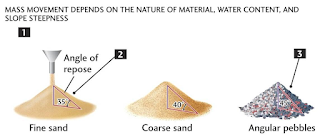3D printing for pharmaceuticals
3D printing, also known as additive manufacturing, is a process of creating three-dimensional objects by adding successive layers of material. It involves the use of a computer-aided design (CAD) software to create a digital model of the object, which is then sliced into multiple layers that can be printed layer by layer.
In the pharmaceutical industry, 3D printing has emerged as a promising technology for drug delivery and personalized medicine. With 3D printing, it is possible to create precise, complex structures that are difficult to achieve with traditional manufacturing methods. This opens up new possibilities for designing drug delivery systems that can target specific areas of the body, release drugs over time, and improve patient compliance.
One of the key advantages of 3D printing for pharmaceuticals is its ability to customize drug dosage and delivery. By creating personalized pills and implants that are tailored to a patient's specific needs, 3D printing can improve treatment outcomes and reduce side effects. For example, it is possible to create a pill with multiple layers, each containing a different drug or dosage, that can release the drugs in a controlled manner over time.
Another advantage of 3D printing is its potential for rapid prototyping and testing. Instead of waiting months or even years for a new drug delivery system to be developed and tested, researchers can use 3D printing to quickly create prototypes and test their efficacy in vitro and in vivo.
However, there are still challenges to overcome in the use of 3D printing for pharmaceuticals. One of the main challenges is ensuring the safety and quality of printed drugs, as well as the reliability and consistency of the printing process. Regulatory bodies such as the FDA are currently developing guidelines for 3D printing in pharmaceuticals to ensure that the technology is used safely and effectively.
Overall, 3D printing has the potential to revolutionize drug delivery and personalized medicine in the pharmaceutical industry. As the technology continues to advance, we can expect to see more applications of 3D printing in the development and manufacturing of drugs and drug delivery systems.
One of the most promising applications of 3D printing in pharmaceuticals is in the development of personalized medicine. By creating customized pills and implants that are tailored to a patient's specific needs, 3D printing can improve treatment outcomes and reduce side effects. For example, patients with conditions such as epilepsy or Parkinson's disease may require customized dosages of medication to manage their symptoms effectively. With 3D printing, it is possible to create pills that are specifically designed to release drugs in a controlled manner over time, providing patients with the precise dosage they need.
Another application of 3D printing in pharmaceuticals is in the development of complex drug delivery systems. With traditional manufacturing methods, it is often difficult to create structures with the precision and complexity required for targeted drug delivery. However, 3D printing allows for the creation of precise, intricate structures that can be tailored to a specific application. This opens up new possibilities for drug delivery systems that can target specific areas of the body, release drugs over time, and improve patient compliance.
In addition to personalized medicine and complex drug delivery systems, 3D printing also has the potential to improve the efficiency of the drug development process. With 3D printing, researchers can quickly create prototypes and test their efficacy in vitro and in vivo. This can significantly reduce the time and cost required to develop new drugs and drug delivery systems, as well as improve the accuracy of drug testing and reduce the need for animal testing.
Despite the potential benefits of 3D printing in pharmaceuticals, there are still challenges to overcome in terms of safety and quality. One of the main concerns is ensuring that printed drugs meet the same standards of quality and safety as conventionally manufactured drugs. This requires careful monitoring of the printing process to ensure that the drugs




Comments
Post a Comment